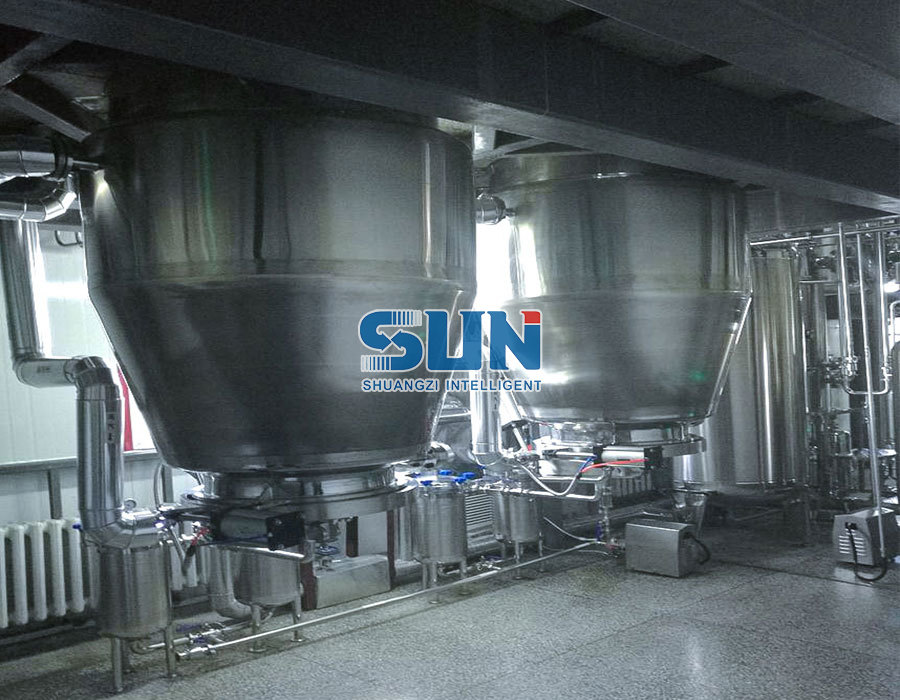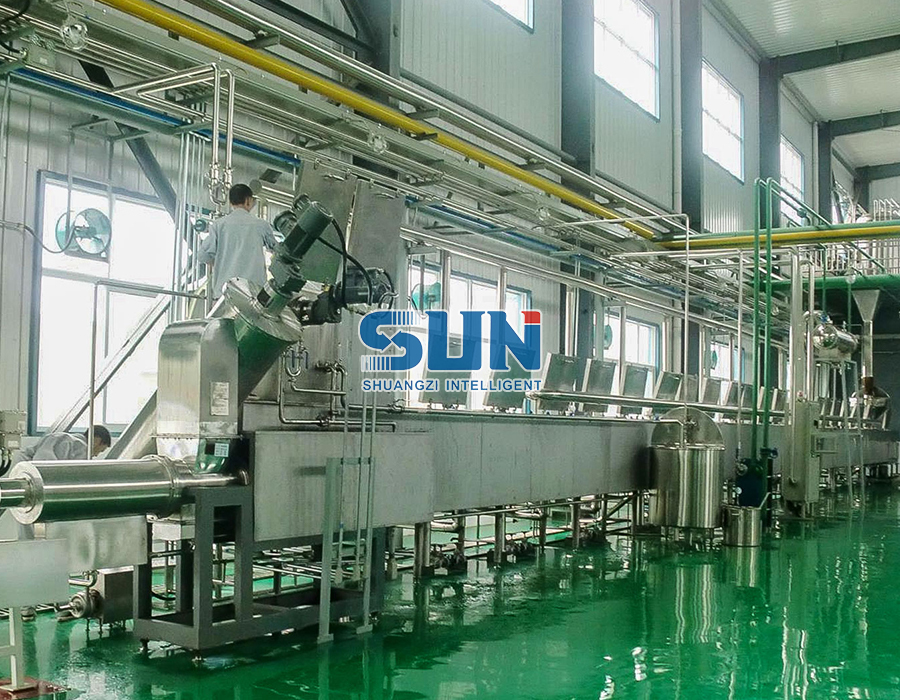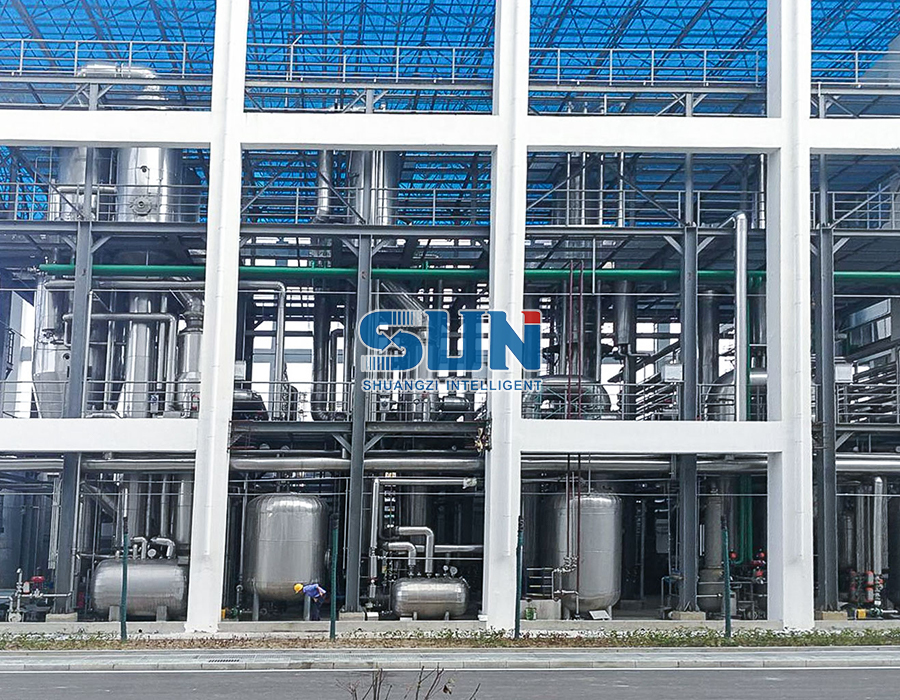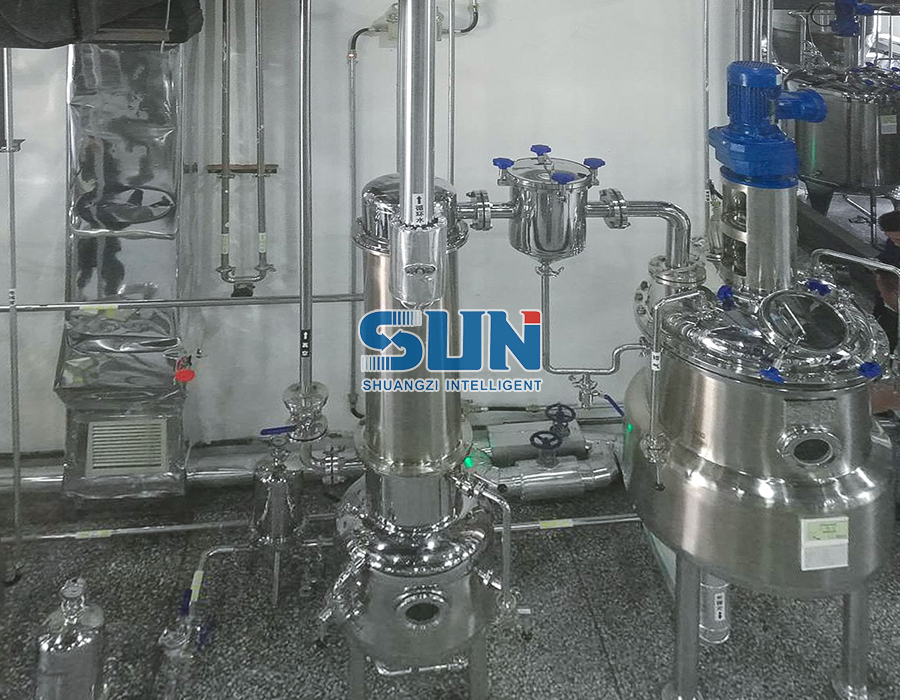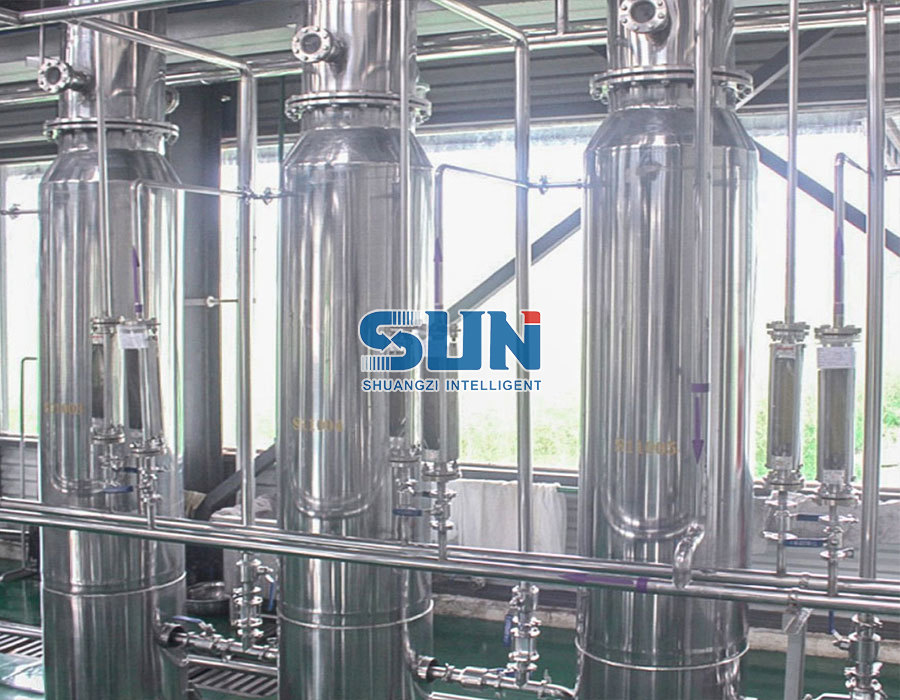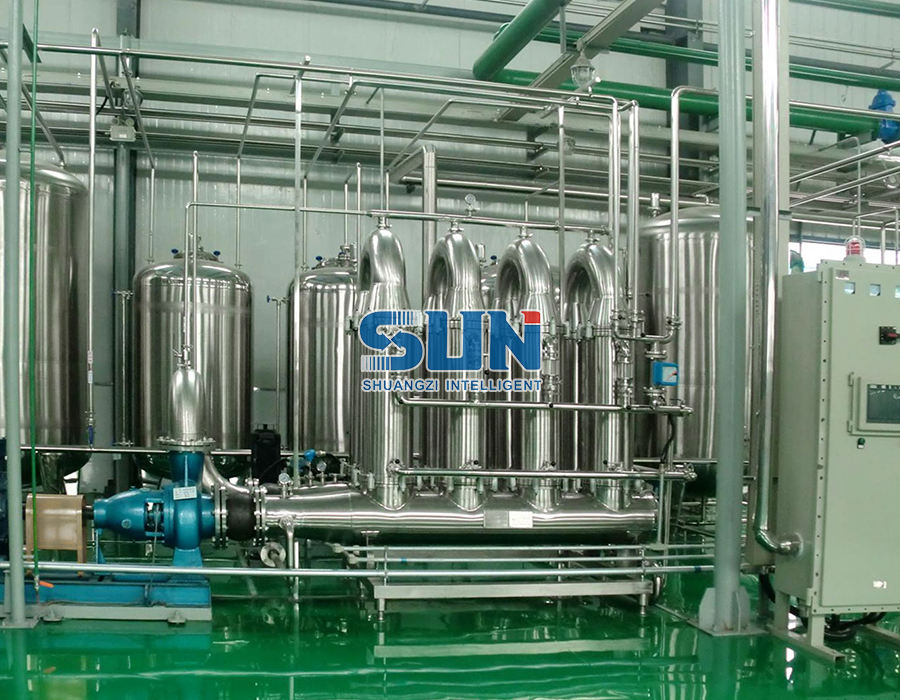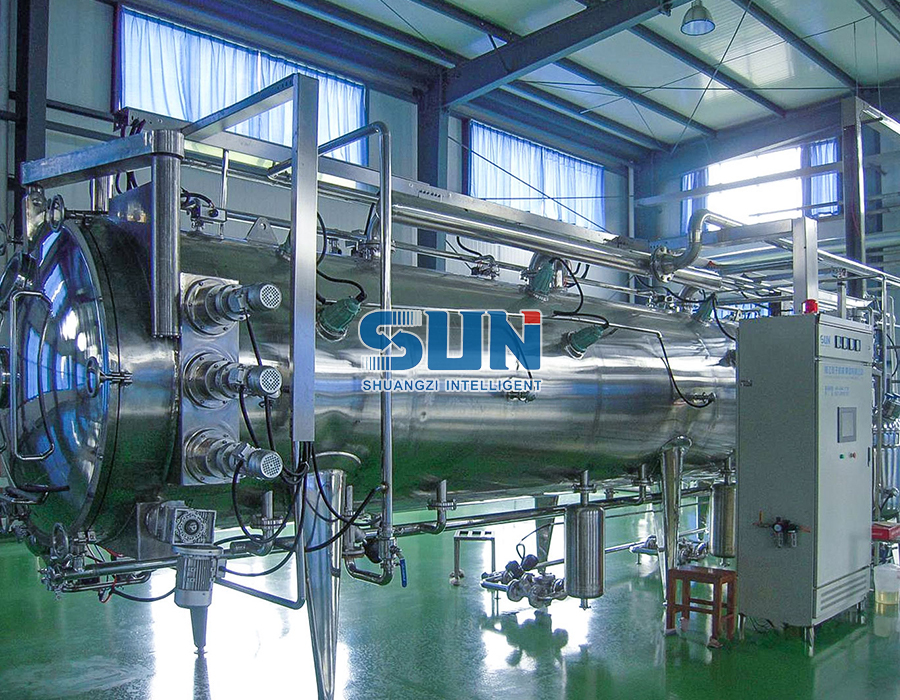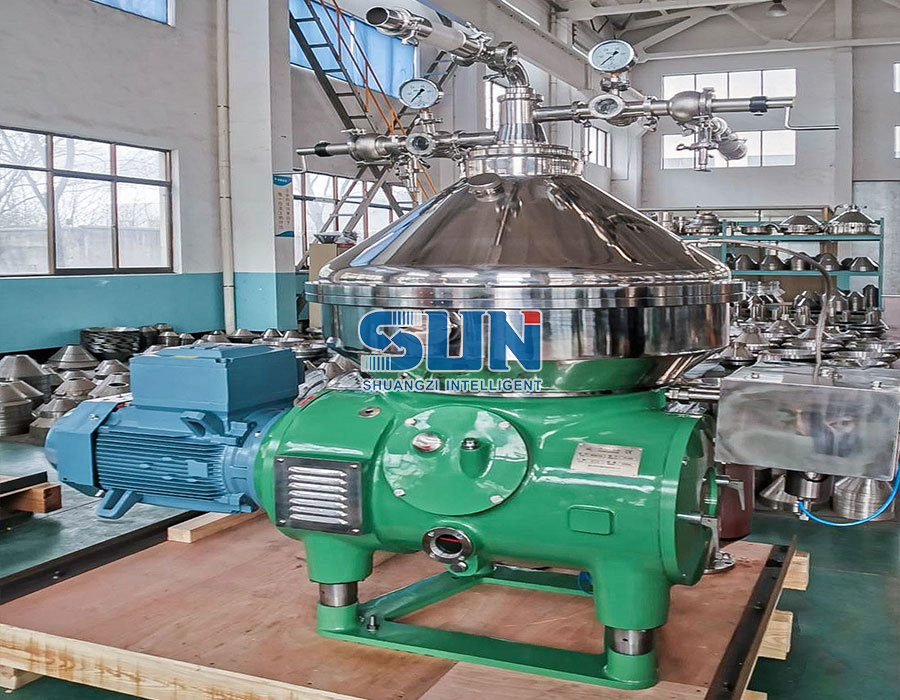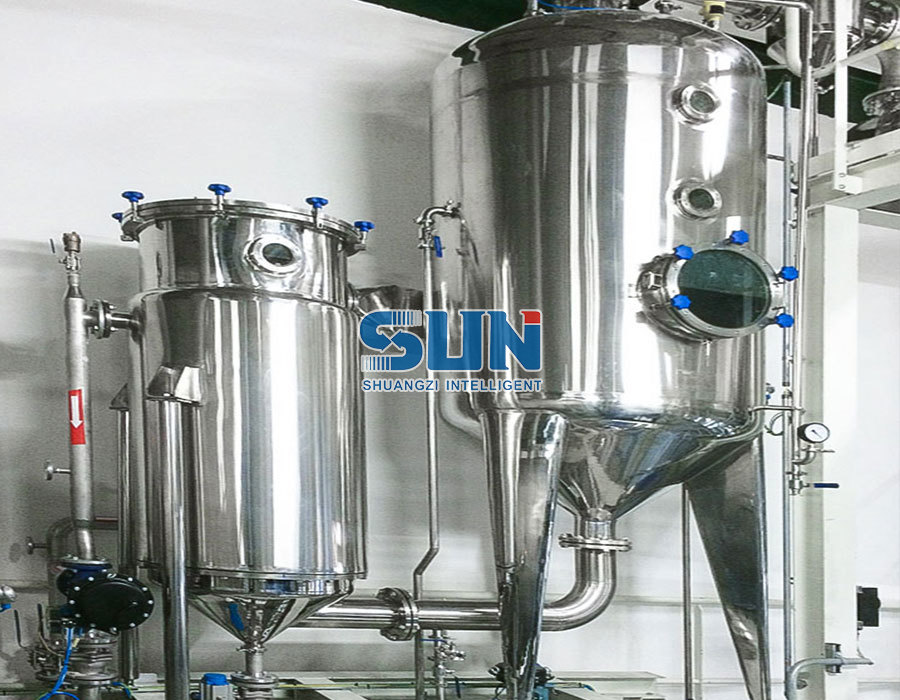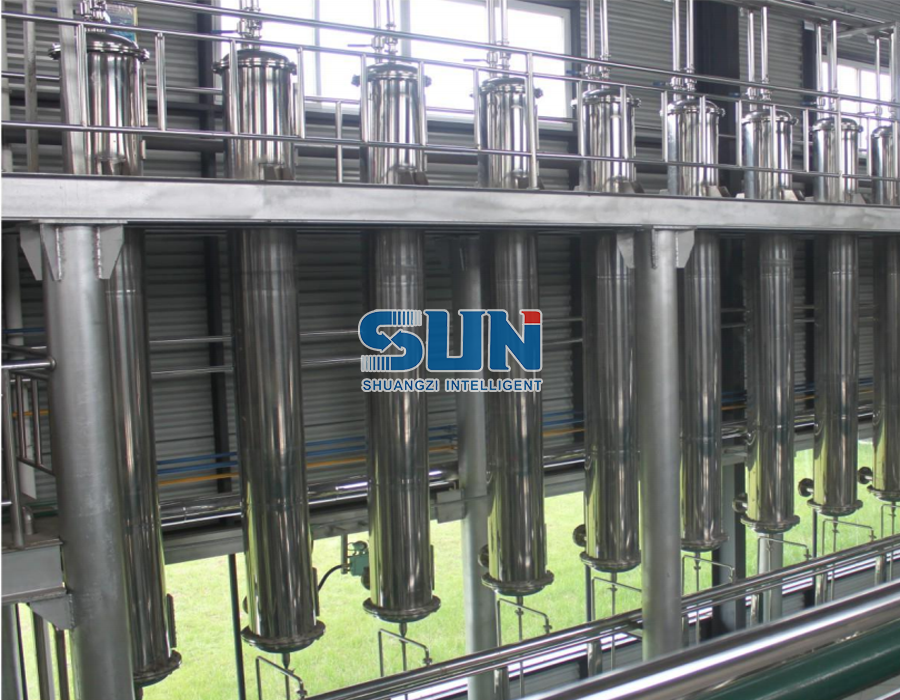The evaporation and concentration ability of a falling film evaporator depends on several factors, including the design of the evaporator, the properties of the liquid solution being processed, and the operating conditions. Falling film evaporators are known for their efficient heat transfer and high evaporation rates, making them suitable for concentrating various types of liquids. Here are some factors that influence the evaporation and concentration ability:
Heat Transfer Surface: Falling film evaporators have a large heat transfer surface area due to the vertical tubes on which the liquid film forms. This allows for efficient heat transfer and high evaporation rates.
Temperature Difference: The temperature difference between the heating medium (usually steam or a hot fluid) and the liquid solution being processed significantly affects the rate of evaporation. A larger temperature difference generally leads to higher evaporation rates.
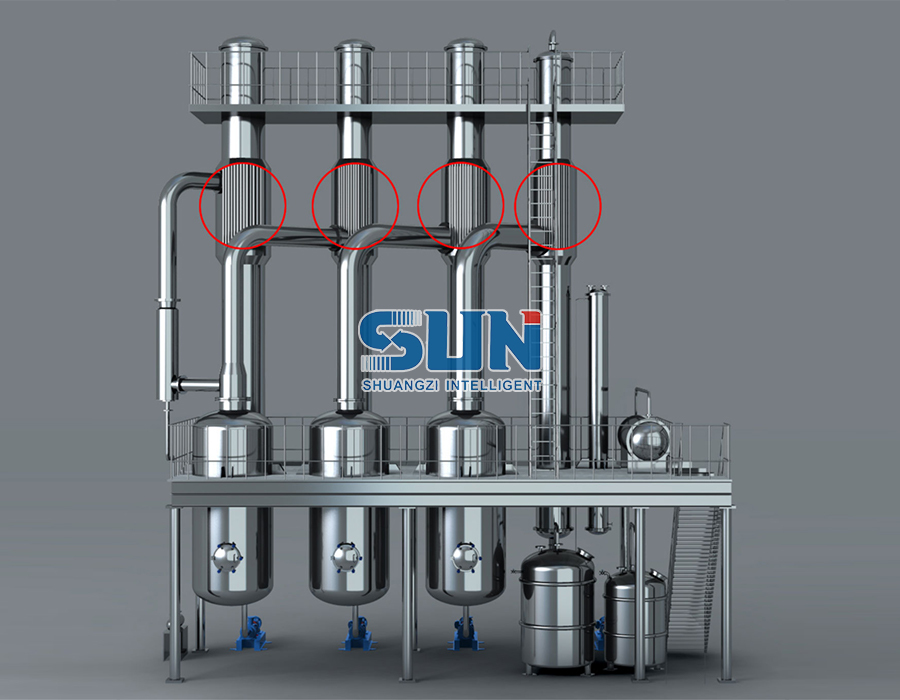

Liquid Properties: The viscosity and thermal properties of the liquid solution play a role in its ability to form and maintain a thin falling film on the evaporator tubes. Higher viscosity liquids may require adjustments in operating conditions to ensure proper film formation.
Liquid Flow Rate: The flow rate of the liquid solution onto the evaporator tubes affects the thickness of the falling film. Higher flow rates can lead to thinner films, which can enhance evaporation rates but may also impact film stability.
Tube Geometry and Material: The design of the evaporator tubes, such as their diameter and length, can influence the evaporation and concentration rates. Additionally, the material of the tubes should be compatible with the liquid being processed to avoid corrosion or other negative effects.
Multiple-Effect Configuration: Falling film evaporators can be used in multiple-effect configurations, where the vapor from one evaporator serves as the heating source for another. This increases energy efficiency and allows for even higher concentration ratios.
Solute Concentration: The initial concentration of the solute in the liquid solution impacts the maximum concentration that can be achieved. As more solvent evaporates, the concentration of the solute in the remaining liquid increases.
Pressure: Operating under vacuum conditions can lower the boiling point of the liquid solution, promoting evaporation at lower temperatures and potentially reducing the risk of heat-sensitive product degradation.


 英语
英语 俄语
俄语